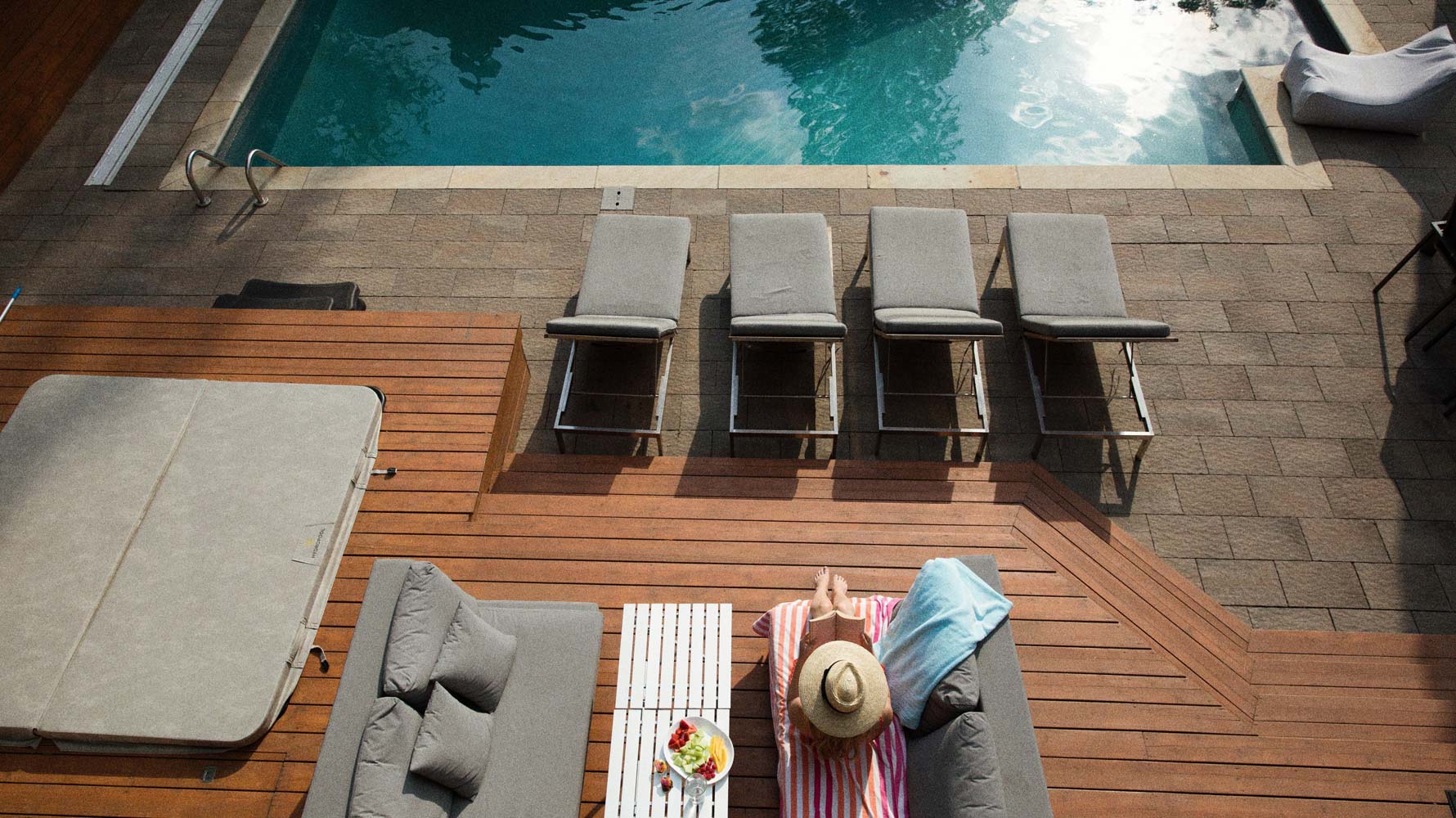For those of us who have been in the industry for a while, you’ll remember when a good night’s rest was defined by a small, somewhat hard mattress with well-tucked, flower patterned blankets. Then hotels introduced a big fluffy, white bed, and just like that basic bedding was no longer acceptable to travelers.
It’s laughable to think a bed could be so revolutionary because today it’s such a basic necessity. Traveler expectations for comfort have grown tremendously in the last 20 years or so.
Hotels can’t just have basic clean sheets, they have to be eucalyptus-scented and organically washed. Gyms with a couple of treadmills and a few free weights don’t cut it anymore. Fitness centers need a full suite of wellness options. If restaurants and food kiosks don’t have fresher, healthier options, nobody will use them today.
Hotels are even offering free wine tasting, putting televisions in bathroom mirrors, matching their décor to local flair, rooms with air purifiers, and using mobile for check-ins, as keys and to control everything in the room.
Business travelers want hotels to be a place where they can rest, eat well, rejuvenate and be productive.
What do business travelers want then?
In a recent GBTA/RoomIt by CWT study, travelers told us exactly what amenities they wished were covered by their travel policies:
- 51% want premium Wi-Fi
- 40% want food delivery services to be reimbursed
- 36% wish to unwind with in-room entertainment/movies
- 33% would like to use fitness class passes
The downside is most travel buyers don’t want the added cost of reimbursing those amenities.
Where does that leave us?
Hotels recognize that appealing to today’s travelers requires a revamped approach. With stress on the rise, many chains have launched entire brands dedicated to wellness or taking steps to help travelers maintain their health-focused life styles. In fact, the wellness travel market is expanding 50% faster than the overall industry.
That really is the key. Hotels are finding that they need to build a seamless living experience from home to road. At home, some people will head straight to spin class right after work, so hotels are putting spinning bikes in their gyms and even in their rooms.
With the rising number of food-obsessed people, or “foodies”, and the increasing presence of food delivery services like Doordash, Uber Eats, and Grubhub, people require more than basic room service or pizza. To help meet expectations hotels are now partnering with some of these services, and directly with surrounding restaurants as well.
Additionally, people often end workdays by unwinding to Netflix, Hulu and other streaming services, so it should come as no surprise that they hope to replicate that when away. Luckily, some hotels are beginning to offer streaming services built into guestroom TVs, so travelers can sign into their accounts and binge watch their favorite shows.
What's your part in this?
The first thing you have to do is make sure you understand your travelers’ needs. While breakfast and Internet access may have been enough a couple of years ago, it may not be today.
Also, evaluate if you are offering enough choice to account for the varying needs of your travelers. If not, they will book outside your travel program.
Next, you need to get your travelers excited about these appealing lifestyle options at the hotels in your program. Many companies are hesitant to allow TMCs or hotels to market directly to their travelers, but when they can highlight exciting opportunities, travelers will be motivated to book within policy.
To be even more effective, take that message beyond email communications. Put it in your corporate intranet, and promote these amenities at your corporate travel fairs. For example, if a hotel has Pelotons, bring one to your travel fair for people to test out. Don’t stop communicating with travelers. There is no better way to close the many gaps between your policy and their understanding of it.
To satisfy the foodies, it may be worth negotiating food and beverage discounts with hotels that have revamped their food offerings. Restaurants are becoming an increasingly bigger focus at hotels with some bringing in chefs and implementing completely new menus, and some brands are even putting together customizable to-go bowls with healthy, local ingredients.
The good news is improving traveler satisfaction isn’t all about letting travelers spend more money on the road. Quite often hotels are stepping up to help meet many of your traveler’s needs, and it might only require a little marketing on your part, or a slightly different approach when negotiating in order to make travelers realize you are meeting their needs. And when travelers are happy with your hotels, they’ll reward you with better hotel program compliance.


